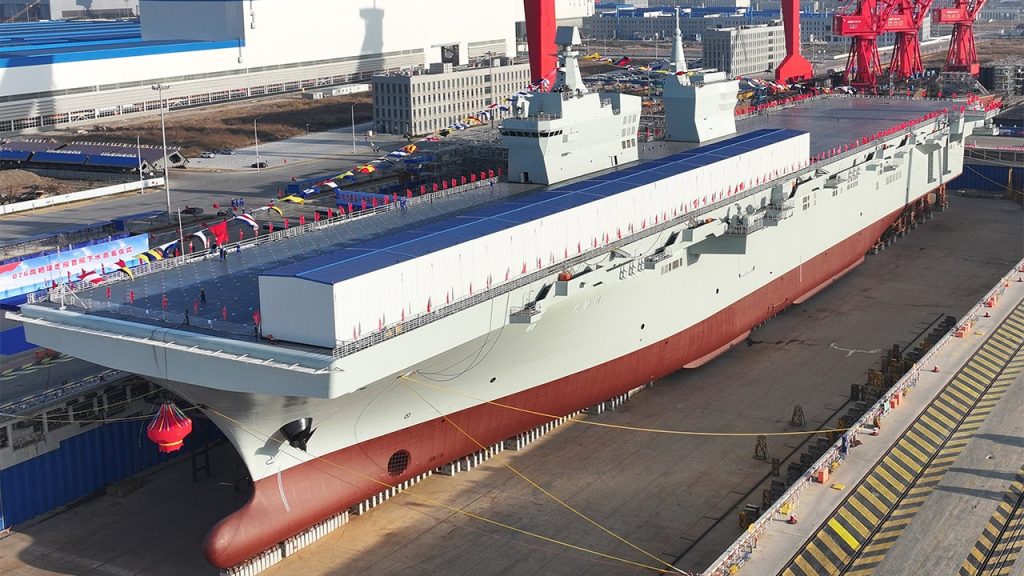China has recently launched its new line of amphibious assault ships, with the first ship named Sichuan being the country’s biggest warship yet. The Sichuan has a full load displacement of 40,000 tons, making it one of the world’s largest amphibious assault ships. Equipped with a dual-island superstructure and full-length flight deck, the ship will play a key role in transforming and developing the Chinese navy, enhancing its combat capabilities in far seas. The Sichuan is capable of launching fighter jets and unmanned drones from an electromagnetic catapult, carrying ground troops in landing craft with air support. Additionally, it features “arrester technology” that allows fighter jets to land on its deck, similar to an aircraft carrier.
China’s navy has been working on modernizing its forces for over a decade, with the goal of being able to operate globally rather than being restricted to waters near the Chinese mainland. In 2019, China launched its first amphibious assault ship, the type 075 class warship called the Hainan. The country first achieved the launch of fighter jets with new electromagnetic technology on its homemade aircraft carrier, the Fujian, two years ago. The Sichuan is now undergoing additional tests at sea, as China continues to upgrade and expand its naval fleet. Recently, researchers discovered that China is also working on designing a nuclear-powered aircraft carrier, which would allow the country to deploy its ships in distant waters without the need for a refueling base.
China currently boasts the largest navy in the world and is actively working to enhance its capabilities further. The country’s naval fleet includes various types of warships and technologies to strengthen its position on the global stage. With ongoing efforts to modernize and expand its forces, China aims to have a navy that can operate effectively in various regions and respond to a range of security challenges. The launch of the Sichuan marks a significant milestone in China’s naval development, showcasing the country’s commitment to enhancing its maritime power and influence. As tensions in the Asia-Pacific region continue to rise, China’s naval capabilities play a crucial role in shaping regional dynamics and asserting its presence in key strategic areas.
The United States Navy currently deploys 11 nuclear-powered aircraft carriers globally, including in the Asia-Pacific region. The presence of these carriers serves as a key element of U.S. military strategy and power projection, enabling the U.S. to maintain a strong presence in strategic locations around the world. China’s efforts to develop a nuclear-powered aircraft carrier reflect its ambition to match or challenge the U.S. Navy’s capabilities and reach. As both countries seek to strengthen their naval forces and expand their influence, the competition for maritime dominance in key regions intensifies. The development of advanced naval technologies and capabilities has become a central aspect of great power competition, shaping the strategic landscape and influencing regional security dynamics.
The launch of the Sichuan is part of China’s broader strategy to modernize its navy and increase its global reach. By investing in advanced warships, aircraft carriers, and other naval technologies, China aims to bolster its maritime power and assert its presence in key maritime regions. As China continues to expand and upgrade its naval forces, it poses a significant challenge to U.S. military dominance in the Asia-Pacific region and beyond. The competition between China and the United States in the maritime domain highlights the growing importance of naval power in shaping global security dynamics. Both countries are actively pursuing military modernization efforts to enhance their naval capabilities and maintain their strategic interests in an increasingly complex and competitive international environment.













